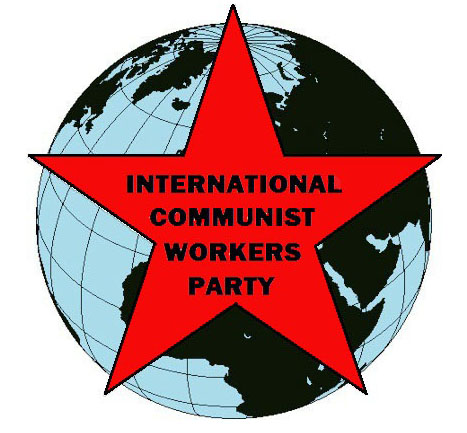
 |
FIGHT FOR COMMUNISM! |
International Communist Workers Party | |
The last article discussed the rise of the “Ultra-Left” in late 1967. It described Shengwulian’s “Whither China?” critique of a “Red Bourgeoisie” led by the Chinese Communist Party (CCP).
“Ultra-leftists” in Wuhan organized the Plough Society in November, 1967, soon after Shengwulian formed in Hunan. Later called Juepai or Bei-jue-yang, its journal was the Yangtze Tribune.
Its “inaugural declaration” criticized “rebels” who were fighting over seats on the Revolutionary Committees. Real revolutionaries, it said, should be preparing for “a new upsurge of the peasant movement.”
In mid-December, peasant rebels of the First Headquarters of Bahe District, Xishui County, approached the Plough Society. First Headquarters was trying to build a “New Countryside” modeled on “military communism.”
They replaced production-team responsibility with brigade-level organization, planning to move quickly to commune-level organization. All livestock were managed centrally. All craftspeople worked together. Everyone ate at communal dining halls, as in the 1958 People’s Communes. First Headquarters even tore down private houses and moved peasants into collective housing.
This “military communism” resembled the People’s Liberation Army (PLA)’s pre-revolution “supply system.” But a key element was missing: mass mobilization based on political commitment. Instead, a militia was to impose the “new rules” by “punishing mercilessly anyone who dares to sabotage the New Countryside.”
Without political mobilization for communism, many peasants resisted this experiment. Neighbors were hostile. Still, Plough Society leaders hailed it as the start of a new peasant movement. They called for support from “true proletarian revolutionaries who are determined to carry out the Cultural Revolution (CR) through to the end.”
All major CCP organs and Wuhan’s major rebel groups ignored First Headquarters. It was driven out of the city. But strikes and violent demonstrations were spreading from Shanghai to other industrial cities. The CCP was worried.
In mid-January 1968, the CCP organized a mass campaign against “Whither China.” The document began to circulate in Wuhan. Juepai (Plough Society) also found materials from Shanghai’s “Oriental Society” and other “ultra-leftist” New Thought collectives.
Juepai leader Lu Li’an concluded that the revolutionary committees were “transitional forms” on the way to a Paris Commune-type power structure. Juepai must help lead the struggle of peasants and others to overthrow the “bourgeois dictatorship and the revisionist system of the revolutionary committee.”
Marx had praised the Paris Commune’s decision to “abolish the standing army.” Lu inferred that a people’s militia must replace China’s PLA. He decided that Juepai should initiate a founding convention for a new communist party to replace the CCP. He was preparing to visit other “ultra-leftists” around the country when he was kidnapped and jailed.
Lu’s comrades Feng Tian’ai and Yang Xiulin carried on. Juepai, said Yang, unlike “ordinary rebels,” understood the basic social contradictions underlying the Cultural Revolution. These were between the new bureaucratic bourgeoisie and the masses.
The masses had to overthrow the new exploiting class in a civil war. They must smash the old state machinery, redistribute property and power, and establish the People’s Commune of China. Feng argued that Juepai should help reorganize a communist party to lead this revolution.
In July, 1968, CCP leaders suppressed “ultra-left” rebel organizations. Most groups lay low, hoping this latest “adverse current” would die down. Not the Yangtze Tribune! On August 4, they put up a big-character poster in downtown Wuhan. Its main message: “Revolutionary people yearn to take the destiny of the proletarian dictatorship, the Great Proletarian Cultural Revolution, and the socialist economy into their own hands….Let the masses educate and liberate themselves.”
The Yangtze Tribune was quickly declared an “extremely reactionary publication.” Lu Li’an and Feng Tian’ai were labeled “active counter-revolutionaries.” Feng was arrested and the Yangtze Tribune shut down. Leaders of the ultra-left Hunan Committee were also imprisoned or killed.
Mao’s government forced young urban activists into the remote countryside. In principle it’s good for students to learn from the rural masses. However, Mao used this as an excuse to disperse and destroy their political movement.
“Three-in-one” revolutionary committees were finally able to function as the state apparatus in cities, workplaces, and campuses. Old party cadres and the military dominated them. The “red bourgeoisie” had won – but not forever.
The next article in this series will sum up lessons from the strengths and weaknesses of the “ultra-left” in the Cultural Revolution